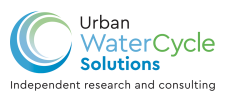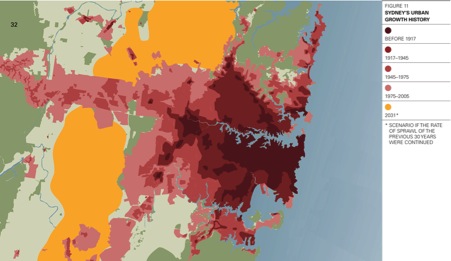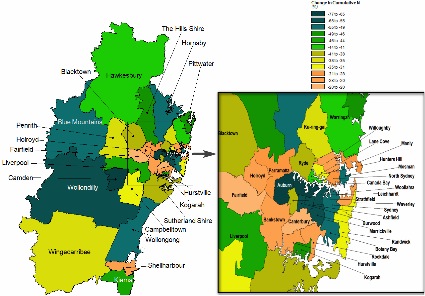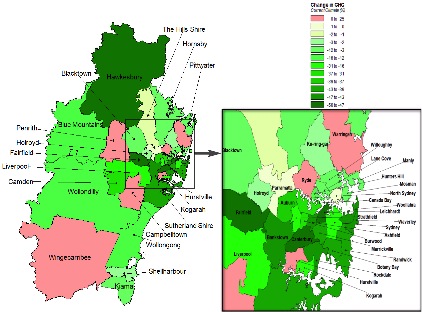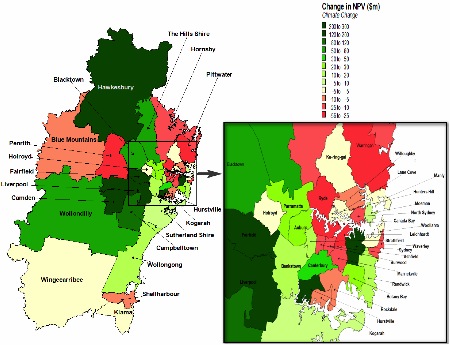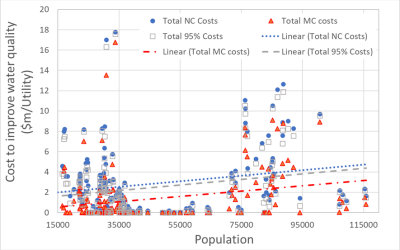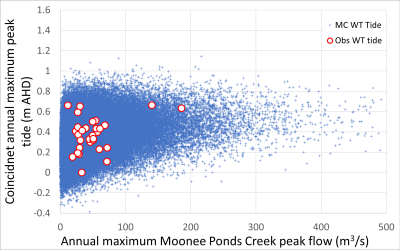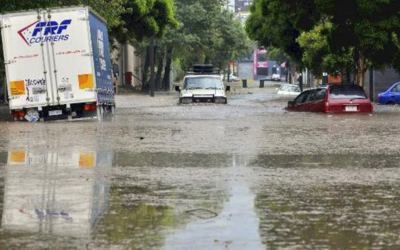Summary
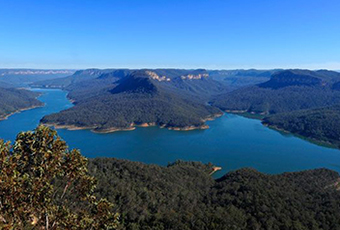
This unique analysis is dependent on detailed local inputs throughout the system, such as demographic profiles and human behaviour, and linked systems that accounts for water supply, sewerage, stormwater and environmental considerations. A parallel investigation was also undertaken by a highly experienced and skilled group of industry leaders which were our Though Leadership Group. This Group provided analysis and commentary about all aspects of SWC and the Greater Sydney region from multiple perspectives, input to the systems analysis, review and interpretation of systems outcomes, and input to the final report.
This project has utilised the powerful framework for detailed systems analysis of the Sydney region that has been developed over a long period of continuous investigation. The unique systems analysis and the Thought Leadership process have generated a considerable volume of information and capability for additional analysis of the Greater Sydney region. It was only possible to present some of the outcomes of a very detailed analysis in this report.
Introduction
Cities constantly change. This continuum of change is influenced by demographic, economic, political, environmental, cultural, and social factors – evolution of a city will vary depending on dominant influences at the time.
The nature, scale and location of water cycle (water, wastewater and stormwater) services have evolved with the metropolis. However, the current approach to water services is largely unchanged from the services established in the late 1800’s and early 1900’s. The future reliability of centralised urban water systems is uncertain. SWC faces the challenge of remaining a global leader in provision of water services to an evolving city in a sector transitioning to a new paradigm of provision of water services.
Dr Peter Coombes and Bonacci Water were engaged by SWC to provide an Alternative Water Strategy for the Greater Sydney region.
SWC was seeking an alternative vision of the future of Sydney and the requirement for water cycle services. This project defined an alternative vision and outlines a roadmap to realise this vision. SWC was seeking a transparent and robust choice of alternative futures that will allow prudent response to an evolving Greater Sydney region. A strategy was provided to manage both imminent and future changes to provision of water services, management of infrastructure, regulation, policy and political challenges.
The extent of the urban footprint for Greater Sydney (NSW Department of Planning)
This report has gathered independent ideas and transformed them into a plan for integrated water cycle services across the Greater Sydney region. Importantly, this project and report has not sought to reconfirm SWC’s existing ideas. Rather it seeks to provide alternative views and strategies that should be considered.
The report does not represent a final destination. It is a starting point in the transition to a new paradigm for provision of water cycle services.
Background
Sydney has been shaped by the availability of reliable supplies of potable water. The site of the colonial settlement of Sydney was chosen for its proximity to the best known freshwater spring – the Tank Stream. Wastewater was collected in water closets or discharged either into cess pits or open sewers. Waterways quickly became overloaded by waste. Sydney is currently serviced by a complex network of pipes, pumps, treatment plants, dams and a desalination plant.
Much of this infrastructure is aging, and services provided by some of those assets are diminished. Recent water supply shortages further exacerbate the problem because it is difficult to efficiently use water with traditional approach to provision of infrastructure. Across Australia, the performance of water infrastructure has been rated as only adequate to poor and it is known there has been considerable underinvestment in water infrastructure of many billions of dollars. SWC confronts many challenges in the near to medium term. These challenges relate to the ongoing ownership and operation of aging infrastructure, and the provision of new services for a growing Greater Sydney region.
The origins of alternative water services can be traced back to the phrase ‘Water Sensitive Urban Design’ (WSUD). The broadest definition of WSUD represents significant changes in the strategies for planning and design of settlements that includes all aspects of water cycle management. The recent drought and the omission of water cycle management strategies from WSUD has led to more holistic philosophies known as Integrated Water Cycle Management (IWCM) that often include WSUD strategies as components for stormwater management. IWCM strategies consider the availability of all water resources as well as reducing water demand by encouraging the use of water efficient appliances and practices. IWCM strategies combine best practice stormwater management with reductions in mains water use and reduced sewage loads to improve the security and sustainability of regional water supplies.
The influence of IWCM is becoming increasingly evident in the Australian landscape and there have been some excellent examples of IWCM applied to challenges of providing water services in the Australian water sector. Five illustrative case studies were provided to demonstrate IWCM strategies that have been investigated, implemented or applied.
Objectives
High level guiding objectives and desired outcomes for the Greater Sydney area were developed in partnership with the Thought Leadership Group. These objectives are also focused on the institutions that influence the future of Greater Sydney with a focus on the importance of water cycle management in the system.
SWC identified a number of key objectives for their Alternative Water Strategy. Each of the overarching objectives state the Alternative Water Strategy should be based on the principles of decentralisation, more sustainable provision of water services, greater integration across water services, and a clear evolution from current thinking and practices.
To enable definition and testing of an alternative water strategy, these overarching objectives were translated into a series of specific principles or targets across the full scope of integrated water service provision. These objectives are consistent with an IWCM strategy and included minimising mains water demands, discharge of sewage, carbon footprints and costs of the development whilst protecting the environment.
Options and Scenarios
Options enable testing of the physical, technical and commercial performance of the system. Defining a base case (Business as Usual) and an alternative (Ultimate) option enabled the testing, comparison and understanding of the behaviour of the Greater Sydney system.
Scenarios (unlike forecasting) do not seek to predict the future. Scenarios are used to describe the expected time based transitions in the qualitative drivers that also influence the behaviour of the system. These qualitative drivers create phases of behaviours that will be experienced by any Option. The consequent plausible alternative futures can sensitise our perceptions of reality as it unfolds and provides intellectual “wind tunnels” in which business strategy Options can be tested.
The following options have been established as part of the investigation:
- Option 0: Base Case – Business as Usual. The base case and represents the existing approach of centralised water, wastewater and stormwater management in Greater Sydney. This Option in includes the BASIX policy.
- Option 0.1: BAU with Climate Change. This variation of Option 0 incorporates the impact of a high emissions climate change scenario to understand the resilience of water cycle management to climate change.
- Option 1: Alternative Option (Ultimate). All new developments and redevelopments will form part of precinct scale IWCM strategies. All new buildings would implement sustainable (water, energy and design) building practices, equivalent to Green Star 6 appliances, local rainwater and stormwater harvesting and reuse of wastewater.
- Option 1.1: Ultimate with climate change. This variation of Option 1 incorporates the impact of a high emissions climate change scenario to understand the resilience of water cycle management climate change.
Three alternative scenarios were established:
- Status Quo – continue with current practice. SWC does the best they can with current strategies, knowledge and capability. This scenario is consistent with the BAU Option.
- Middle Ground – Take advantage of some opportunities but miss out other significant opportunities. This scenario is a variable combination of the BAU and ULT Options.
- Aspiration – The only sensible thing to do. World leader, best practice, innovation and greatest political benefit. This scenario is consistent with the ULT Option.
Methodology
This study employed an integrated systems approach to analysing the performance of integrated water cycle management Options for Greater Sydney. The Options were determined to generate understanding of the response of the water cycle systems throughout Greater Sydney to alternative strategies. This unique analysis is dependent on detailed inputs, such as demographic profiles, and linked systems that accounts for water supply, sewerage, stormwater and environmental considerations. This section outlines the key assumptions and methods used in this analysis.
Change in cumulative nitrogen loads in stormwater runoff generated by IWCM solutions
Change in greenhouse gas emissions generated by the IWCM solution
In addition, a parallel investigation was undertaken by a highly experienced and skilled group of industry leaders which were our Thought Leadership Group. This Group provided analysis of all aspects of the SWC and the Greater Sydney region from multiple perspectives, input to the systems analysis, review and interpretation of systems outcomes, and input to the final report.
Conclusions
- It is clear that the considerable ongoing growth of Greater Sydney presents a range of substantial challenges to traditional planning and servicing paradigms.
- This challenging growth also presents compelling opportunities to change the approach to planning and providing water services for the region
- It is likely Sydney will not evolve as a uniform spatial or temporal process.
- This creates considerable uncertainty for the provision of traditional centralised strategies for management of water and sewage.
- The areas likely to experience the greatest growth also currently have the lowest household incomes which will present considerable long term challenges to managing the social structure of the metropolis.
- The increasing movement and accumulation of water, wastewater and stormwater throughout expanding or aging networks of infrastructure is the greatest challenge facing SWC.
- The increasing age and declining capacity and condition of assets is expected to escalate the cost of managing the assets.
- Incremental extension, renewal and amplification or the infrastructure networks to meet these challenges is likely to generate significant diseconomies of scale.
- Water cycle networks throughout Greater Sydney are reliant on significant amounts of energy to transfer water and sewage to locations where gravity can be utilised for distribution or disposal.
- Significant spatial variation exists throughout the Greater Sydney region that cannot be described by the averages and generalisations commonly employed in the water industry.
- Global responses of the Greater Sydney system are driven by a range of decentralised behaviours.
- There is a need for greater understanding of the regimes of water use behaviours throughout the region.
- Regional water security does not equate to spatial water security throughout the region.
- Areas of Sydney with the least water security also have the greatest concentration of rainfall.
- Decentralised systems are not necessarily “stand alone” systems. They represent a smaller system within a larger system that may have infrequent and dimished dependance on the existing system.
- Decentralised IWCM solutions provide a lower cost and greater community value approach to ensuring water security throughout Sydney.
- This study has established that alternative water cycle management is technically, commercially, socially and environmentally viable strategy.
- A holistic decision making framework for provision of services and investment decisions is required to recognise the value of alternatives.
- There must be a transition to an investment economics methodology to drive decisions that focus on operational efficiency.
Change in economic benefits generated by IWCM solutions
